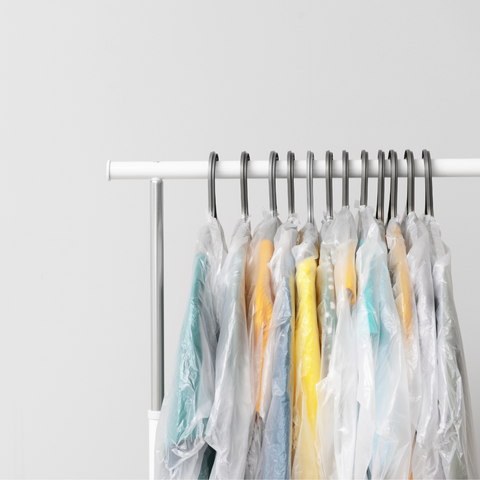Did you know that the first dry cleaning business became a commercially viable service in New York City in 1905? What about knowing that the typical lifespan of a garment is now 19 months? Despite the different washing methods available, most people are unaware of how much work goes into keeping our garments clean and fresh. The range of possibilities can be overwhelming if you’ve never thought about it before, so let’s dive in and explore everything there is to know about dry cleaning – from its origins to current innovations.
What is Dry Cleaning?
Dry cleaning is a cleaning method that uses solvents to remove dirt and soil from fabrics. Rather than washing garments, dry cleaning removes stains and odours from already-clean clothes using chemicals. Solvents dissolve dirt and oil from cloth in dry cleaning. Dry cleaning uses special solvents to dissolve dirt and oils that are in fabrics. Water is extracted from the material before solvent treatment to accomplish this, followed by solvent treatment. After that, rinsing of the solvent takes place, leaving the fabric clean and dry. Dry cleaning is for garments made of natural fibres such as wool, silk, and cotton. These fabrics are too fragile for regular washing and can shrink or lose their shape when subjected to water. Many people mistakenly refer to any cleaning method that does not involve water as dry cleaning.
How Does Dry Cleaning Work?
The procedure for dry cleaning begins by immersing the material in a solvent that dissolves and extracts dirt. Before the cloth dries, most dry cleaners press it to remove excess solvent and wrinkles. The final step is pressing the cleaned garment while it is still damp. Your clothes are washed and cleaned in a solvent-based cleaning solution in a washing machine. It then removes and cleans the solvent from your clothes, leaving them clean and fresh! When your clothes are washed and dried, they will undergo wrinkles removal. Finally, they are dried and ironed to finish drying.
Why Is Dry Cleaning So Important?
Many people are hesitant about dry cleaning because they’re worried about the chemicals used. However, the environmental impact has reduced considerably over the past few decades. Most modern dry cleaners use advanced machinery and eco-friendly cleaning agents such as carbon dioxide, hydrocarbons, and perchloroethylene. Dry cleaning is also a much faster and more convenient method of cleaning clothes than washing them in a machine and hanging them to dry. It also has a lasting effect, as dry cleaning kills all the bacteria that cause stains and odours. In addition, dry cleaning is the only method which cleans delicate fabrics such as silk, velvet, and lace. Even if you are extremely careful when washing these items by hand, you risk damaging them. Washing machines have rotating agitators that can tear delicate fabrics. Finally, all materials shrink when washed. It is a fact for items made from natural fibres such as cotton, linen, or wool. Dry cleaning is the only method that will not shrink the fabric.
The History of Dry Cleaning
In the 19th century, the Chinese invented dry cleaning by mixing wood tar, naphtha, and petroleum distillates to clean high-quality items. At that time, washing clothes was costly and time-consuming. Heading to the river, scrubbing garments with bar soap, and rinsing them in the water before hanging them to dry were required. Washing clothes was expensive, so many people decided to hire cleaners and have their garments pressed and cleaned with solvent. It is the beginning of the dry cleaning process that we know of today. However, at the time, dry cleaners used hazardous materials for the people wearing the garments and the workers.
Pros of Dry Cleaning
- Dry cleaning kills all the bacteria that cause stains and odours.
- Dry cleaning is a much faster and more convenient method of cleaning clothes than washing them in a machine and hanging them to dry.
- It also has a lasting effect, as dry cleaning kills all the bacteria that cause stains and odours.
- In addition, dry cleaning is the only method that cleans delicate fabrics such as silk, velvet, and lace.
- Finally, Getting your favourite pieces cleaned professionally can help them last longer and keep them looking their finest at all times.
Cons of Dry Cleaning
- Although dry cleaning kills all the bacteria that cause stains and odours, it does not destroy the bacteria itself, which means that it can build up over time and lead to a re-formation of specks of dirt.
- Dry cleaning is a much faster and more convenient method of cleaning clothes than washing them in a machine and hanging them to dry. However, this can lead to quick wear and tear on garments.
- It also has a lasting effect, as dry cleaning kills all the bacteria that cause stains and odours. However, this can lead to faster wear and tear on garments.
- Finally, all fabrics shrink when washed. It usually happens for items made from natural fibres such as cotton, linen, or wool.
What to Look for When Hiring a Dry cleaner
Since there are several dry cleaning methods, It is critical to study and learn more about which technique your dry cleaner uses. The following points will help you when picking out a dry cleaner:
- What are the chemicals used?
- Are they eco-friendly?
- Do they have a lot of experience cleaning items of your type?
- Is it a family-owned business?
- Do they have excellent reviews?
- Is it conveniently located?
- How much do they charge?
- Is there a pick-up and drop-off service?
Conclusion
In conclusion, choosing a reputable dry cleaner is essential to keeping your clothes in top condition. Be sure to consider the dry cleaner's experience, chemicals used, location, pick-up and drop-off service, pricing, and customer reviews. At Goal Winners, we understand the importance of keeping your clothes looking their best. That's why we offer a wide range of high-quality metal wire hangers, garment bags, and clothes covers that are perfect for use with any dry cleaning service. Our products are designed to protect your clothes and keep them looking great for longer, so you can enjoy the convenience of dry cleaning without having to worry about the condition of your clothes.




